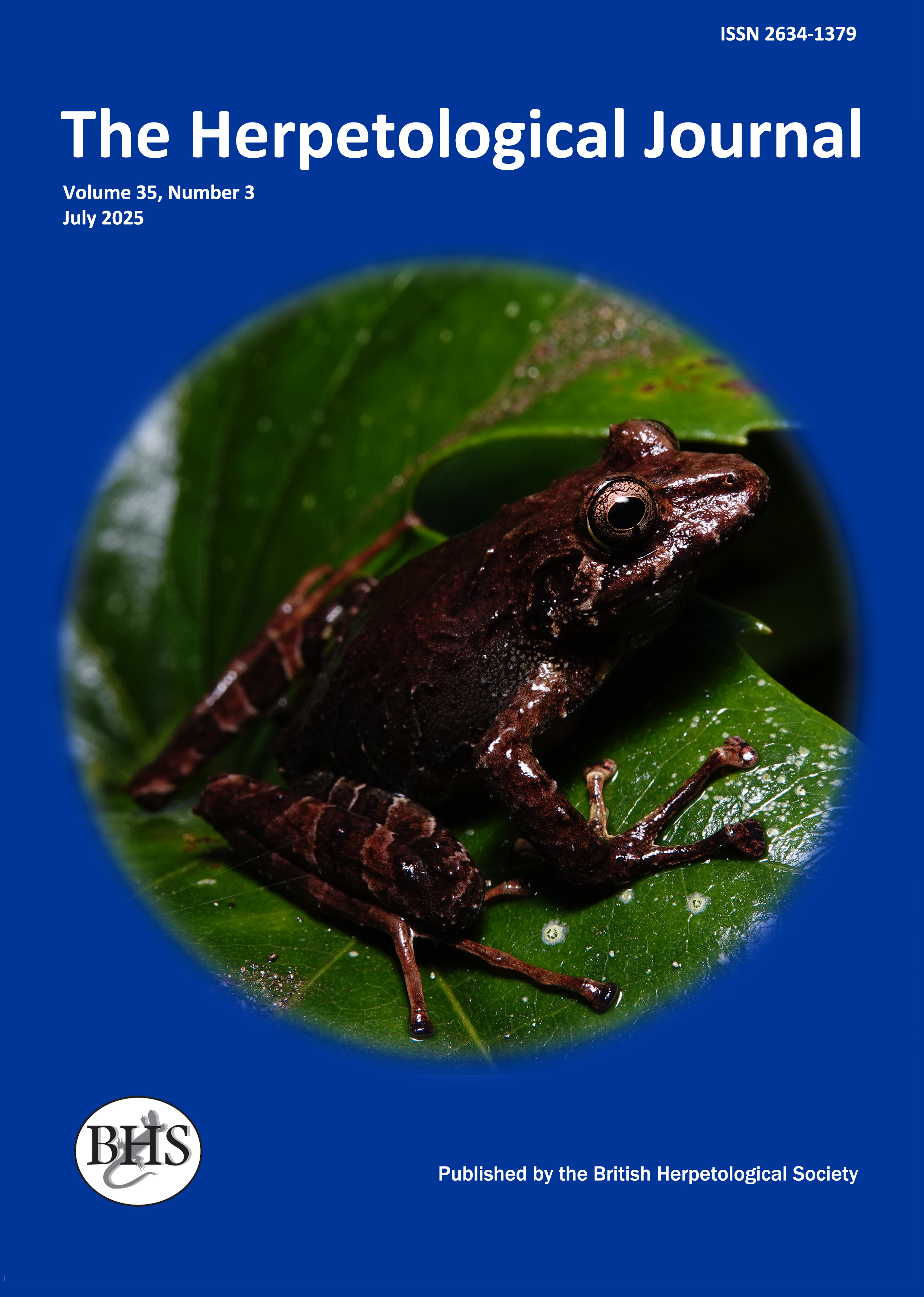
The Herpetological Journal
The Herpetological Journal is the Society's prestigious quarterly scientific journal. Articles are listed in Biological Abstracts, Current Awareness in Biological Sciences,Current Contents, Science Citation Index, and Zoological Record.
ISSN 0268-0130
2021 Impact Factor from Clarivate for the Herpetological Journal is 1.194, an increase of 0.332 from 2020.
pdf 05. Field Body Temperatures of Caimans in the Pantanal, Brazil
1827 downloads
Open Access
pp. 97-106
Authors: Campos, Zilca; Coutinho, Marcos & Magnusson, Willam E.
Abstract: Body temperatures of 51 caimans in the Pantanal were monitored by radio telemetry in cool (dry season) and warm (dry and wet seasons) seasons in an area with isolated lakes and an area with intermittent rivers. Cloacal temperatures of 739 caimans of different sizes captured between 1830 hrs and 2200 hrs were measured with a digital thermometer between August 1996 and September 1999 in the same area. The masses of caimans monitored ranged from 3 to 42 kg, and caiman size affected the amplitude of body temperatures. Small caimans generally had lower mean body temperatures than larger caimans only at the beginning of the night in the cool season before body temperatures equilibrated with water temperatures. Mean body temperature was 25.7 °C in the cool season and 30.1 °C in the warm season, with a minimum of 16.9 °C and a maximum of 37.9 °C. In the warm season, caimans spent more time in shady areas, on land or in the water, than exposed directly to sunlight, and body temperatures only slightly exceeded water temperatures. In the cool season, caimans basked in the sun, both on land and in water, and caimans on land achieved body temperatures up to 15 °C above water temperatures, but body temperatures of caimans on land rarely exceeded air temperatures during daylight hours. Gravid females did not have higher temperatures than females that were not gravid. The caimans appeared to vary from near thermoconformity in the warm season to active thermoregulation when water temperatures were less than about 28 °C. However, caimans often appeared to give low priority to thermoregulation, and much shuttling behavior may occur for reasons unrelated to thermoregulation.
Keywords: CAIMAN CROCODILUS YACARE, BEHAVIOUR, THERMOREGULATION, TEMPERATURE

